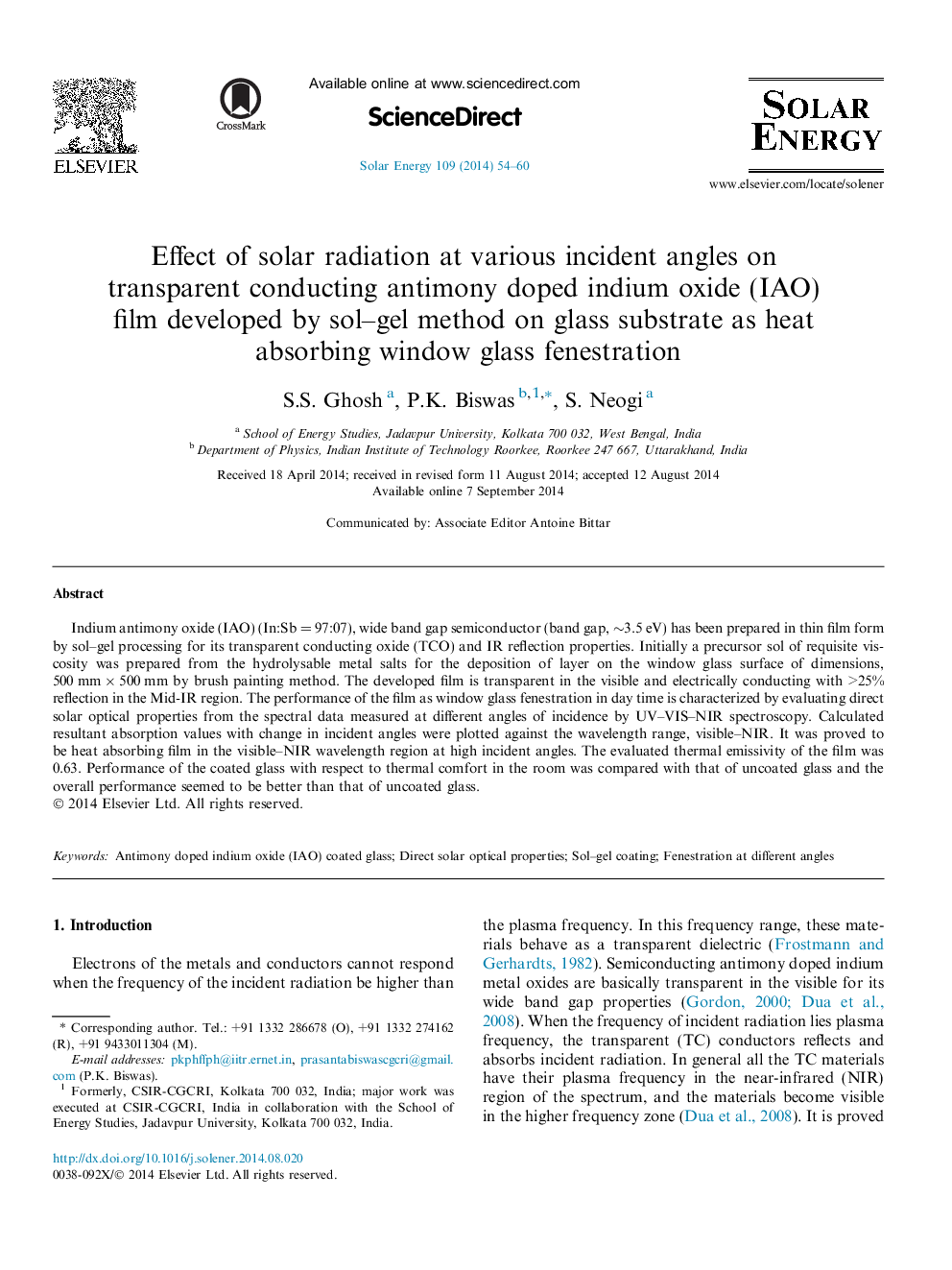| Article ID | Journal | Published Year | Pages | File Type |
|---|---|---|---|---|
| 1549837 | Solar Energy | 2014 | 7 Pages |
•We have developed transparent conducting oxide film on glass by sol–gel route.•Transmission, reflection and hence absorption were studied at different incidence angles.•The emissivity of the coated glass is ∼20% less than uncoated.•Absorption of coated glass is ∼10% higher than uncoated.•Effective heat absorbing coating for thermal comfort of the room.
Indium antimony oxide (IAO) (In:Sb = 97:07), wide band gap semiconductor (band gap, ∼3.5 eV) has been prepared in thin film form by sol–gel processing for its transparent conducting oxide (TCO) and IR reflection properties. Initially a precursor sol of requisite viscosity was prepared from the hydrolysable metal salts for the deposition of layer on the window glass surface of dimensions, 500 mm × 500 mm by brush painting method. The developed film is transparent in the visible and electrically conducting with >25% reflection in the Mid-IR region. The performance of the film as window glass fenestration in day time is characterized by evaluating direct solar optical properties from the spectral data measured at different angles of incidence by UV–VIS–NIR spectroscopy. Calculated resultant absorption values with change in incident angles were plotted against the wavelength range, visible–NIR. It was proved to be heat absorbing film in the visible–NIR wavelength region at high incident angles. The evaluated thermal emissivity of the film was 0.63. Performance of the coated glass with respect to thermal comfort in the room was compared with that of uncoated glass and the overall performance seemed to be better than that of uncoated glass.
